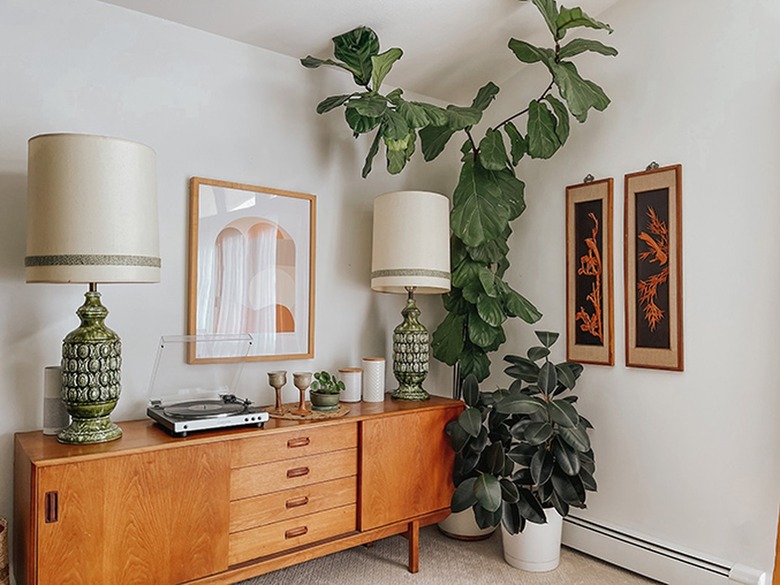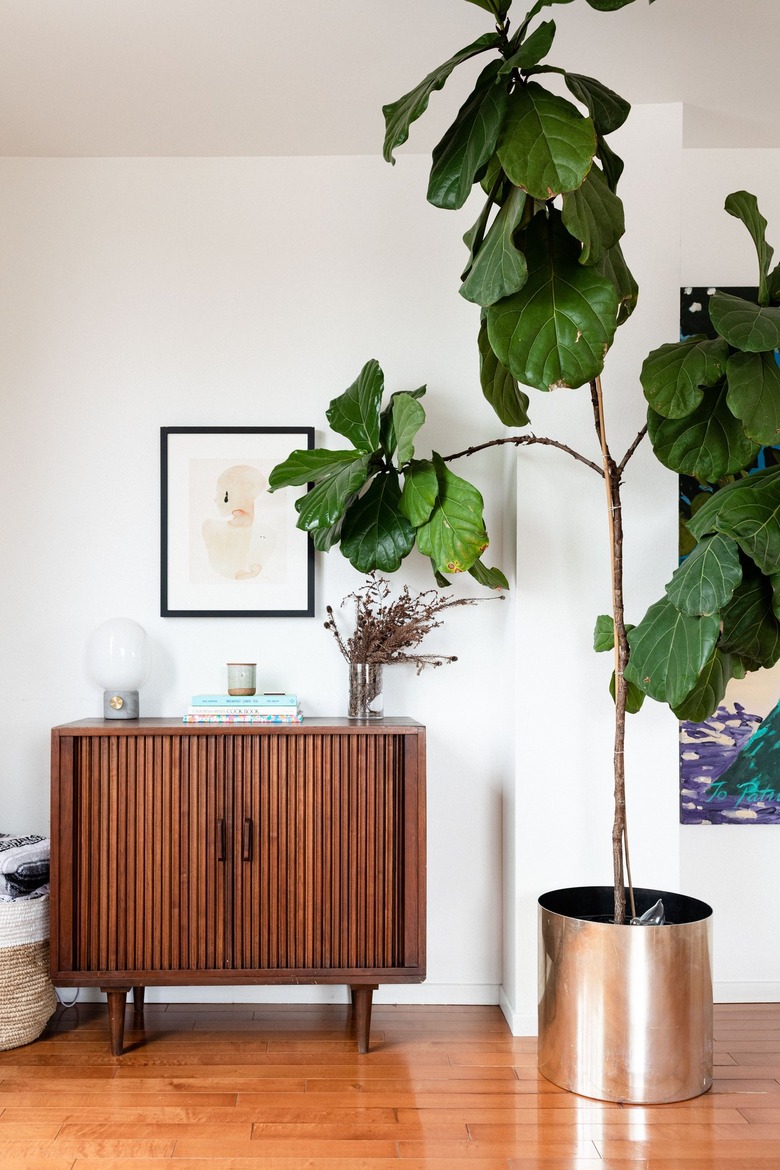Does Wiggling Your Plant Actually Make It Happier?
The Internet is buzzing with plant care tips that involve wiggling houseplants. Specifically, picking up a houseplant and wiggling it every day.
What is this supposed to do to the plant? Is this a new plant need that we were unaware of? We were curious, so we tracked down the story. Here's what we need to know.
Wiggling 101
Wiggling 101
First, the bad news. This wiggling hack only applies — so far — to one type of plant. That is the fiddle leaf fig (Ficus lyrata), a wonderful ornamental houseplant with enormous leaves. These shiny plant leaves have "waists" which makes their shape somewhat fiddle-like. These plants are shown in photos as magnificent, "statement" plants, tall and proud. Unfortunately, in reality, they often look lopsided.
The disappointed plant parents want to know what on earth went wrong, and, more particularly, how to transform their fiddle leaf fig into something gorgeous. The problem lies with the weighty size of the foliage versus the slender, flexible trunks they grow on, stems that can grow up to 10 feet indoors. As the leaves get larger, they weigh down the plant stems and can cause them to lean over. It's not an attractive look (it looks like it's wilting), and staking only goes so far.
Building Plant "Muscles"
Building Plant "Muscles"
Fiddle leaf figs also grow in the wild. They hail from tropical parts of Africa, where they grow outdoors in warm and wet conditions. Outdoors, they have support from other nearby plants and also a bit of wind. These wild plant trunks are straight and strong.
Someone considered the matter and determined that it is the wind that has made the difference. The outdoor breezes hit the wild fiddle leaf fig trunks from the time they are young through their maturity, so they grow trunk "muscles" that allow they to port the heavy leaves without bowing over.
Wiggling Like the Wind
Wiggling Like the Wind
The idea soon developed that "wiggling" the indoor plant every day would give the fiddle leaf fig's stems the toughness that they would need to be a stunning focal piece in a living room. So the wiggling movement began.
The treatment works like this: you detach the plant from its stake and locate the stem. They you wiggle the stem back and forth as if it were blowing in the wind. This is said to "simulate all of the benefits of a natural outdoor environment" while avoiding pests and other outdoor drawbacks.
We make no guarantees that this will work, but it is certainly a fascinating concept. We recommend that you make sure your ficus is getting sufficient sun (here's how to know how much light you have for your houseplants) and adequate fertilizer. It will also need a large enough container to allow a strong root system to develop. (Of course, good potting soil, enough water, drainage holes in your pot, and good indoor air quality help, too! The fiddle leaf fig plant is not exactly low maintenance.) Give it a try, go flex your green thumb, and keep us posted.
References
- Plantophiles: How To Thicken Fiddle Leaf Fig Trunk – A Must-Read Guide
- Fiddle Leaf Fig:How to Strengthen and Thicken a Fiddle Leaf Fig Tree Trunk (Video)
- Nature.com: Mitochondrial movement during its association with chloroplasts in Arabidopsis thaliana
- Balcony & Garden Web: 13 Bizarre Houseplant Tricks Worth Noting

